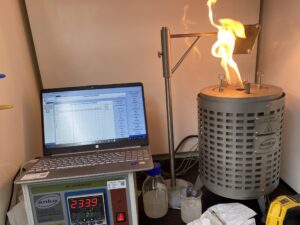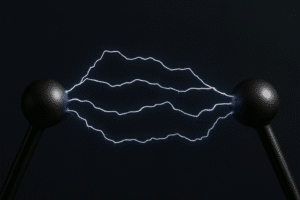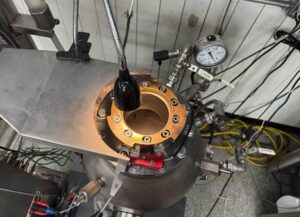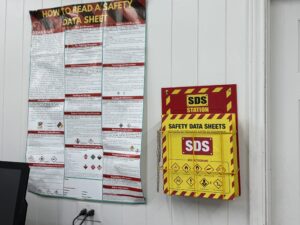We also offer
What is Flash Point
Flash point is the lowest temperature of a flammable liquid—adjusted for atmospheric pressure variations from 101.3 kPa—at which the application of an ignition source ignites the vapours under specified test conditions. At this temperature, the liquid produces enough vapour near its surface to form an ignitable mixture with air.
Fire point is the lowest temperature at which the liquid continues to burn for at least five seconds after removing the ignition source.
Testing Principle and Methodology
At Prime Process Safety Center, we determine flash point and fire point of petroleum products and other flammable liquids using:
-
Pensky-Martens Closed Cup method
-
Cleveland Open Cup method
Closed Cup Method:
Pour the test liquid into the cup to the marked level, then place it in the holder. Secure the lid, which contains a thermometer and stirrer. Heat the liquid at about 1°C per minute while stirring at 250 r/min. Introduce an ignition source (a 3.2–4.8 mm flame) into the vapour space for 0.5 seconds. Make observations every 2°C until a flash occurs. If you observe a flash early, cool the sample to 18°C below that temperature and repeat the test.
Open Cup Method:
Similar to the closed cup test, but without a lid. This results in a higher flash point measurement. The Cleveland Open Cup tester is also used to determine fire point, ensuring the liquid sustains burning for at least five seconds after removing the ignition source.
Applicable Standards
-
ASTM D93 – Flash Point by Pensky-Martens Closed Cup Tester
-
ISO 2719 – Determination of Flash Point by Pensky-Martens Closed Cup Method
-
ASTM D3828 – Flash Point by Small Scale Closed Cup Tester
-
ASTM D92 – Flash and Fire Points by Cleveland Open Cup Tester
Data Interpretation
Examples of flash points for common flammable liquids:
| Hydrocarbon | Purity, mol% | Flash Point (ᣞC) | Tolerance |
| n-Decane | 99+ | 52.8 | 2.6 |
| n-Undecane | 99+ | 68.7 | 3.4 |
| n-tetradecane | 99+ | 109.3 | 5.4 |
| n-hexadecane | 99+ | 133.9 | 6.7 |
Flash point provides critical insight into a liquid’s volatility and flammability, making it an essential factor in evaluating potential fire hazards during storage, transportation, and usage.
-
Low flash point = Highly flammable
-
High flash point = Less flammable
It can also reveal the possible presence of highly volatile, flammable materials in substances that are otherwise considered non-volatile or non-flammable.
Why Choose Prime Process Safety Center
-
Expertise: Our team is highly experienced in performing accurate and reliable flash and fire point tests.
-
Advanced Equipment: We use state-of-the-art testing systems for precise and sensitive measurements.
-
Strict Protocols: Our procedures follow industry and regulatory standards with rigorous quality control.
- Accreditation: Testing performed in our ISO/IEC 17025:2017 accredited laboratory, ensuring recognized competency and adherence to international quality standards.
-
Insightful Analysis: We interpret and analyze results to provide valuable recommendations for your specific application or research.
At Prime Process Safety Center, our goal is to deliver accurate, defensible data that meets your safety, compliance, and operational needs.
FAQ
What is the Difference Between Flash Point and Fire Point?
Answer: Flash point is the lowest temperature at which a substance emits enough vapor to ignite momentarily with a flame when exposed to an ignition source. Fire point is the temperature at which sustained combustion of the substance occurs.
Why Are Flash Point and Fire Point Important?
Answer: Flash point and fire point provide critical information about a substance's flammability and ignition characteristics, helping determine safe handling, storage, and transportation conditions to prevent fires or accidents.
How Are Flash Point and Fire Point Determined?
Answer: Flash point is typically determined using standardized methods like the Pensky-Martens closed cup or Cleveland open cup apparatus, heating the substance and applying an ignition source. Fire point is measured when sustained combustion occurs after the flash point.
What Factors Influence Flash Point and Fire Point?
Answer: Several factors affect these points, including the chemical composition of the substance, volatility, presence of impurities, atmospheric pressure, and the method used for testing.
What Are the Practical Applications of Flash Point and Fire Point?
Answer: Flash point and fire point data are essential for classifying substances, designing safe storage and handling protocols, selecting appropriate fire suppression systems, and ensuring workplace safety in industries handling flammable materials.















